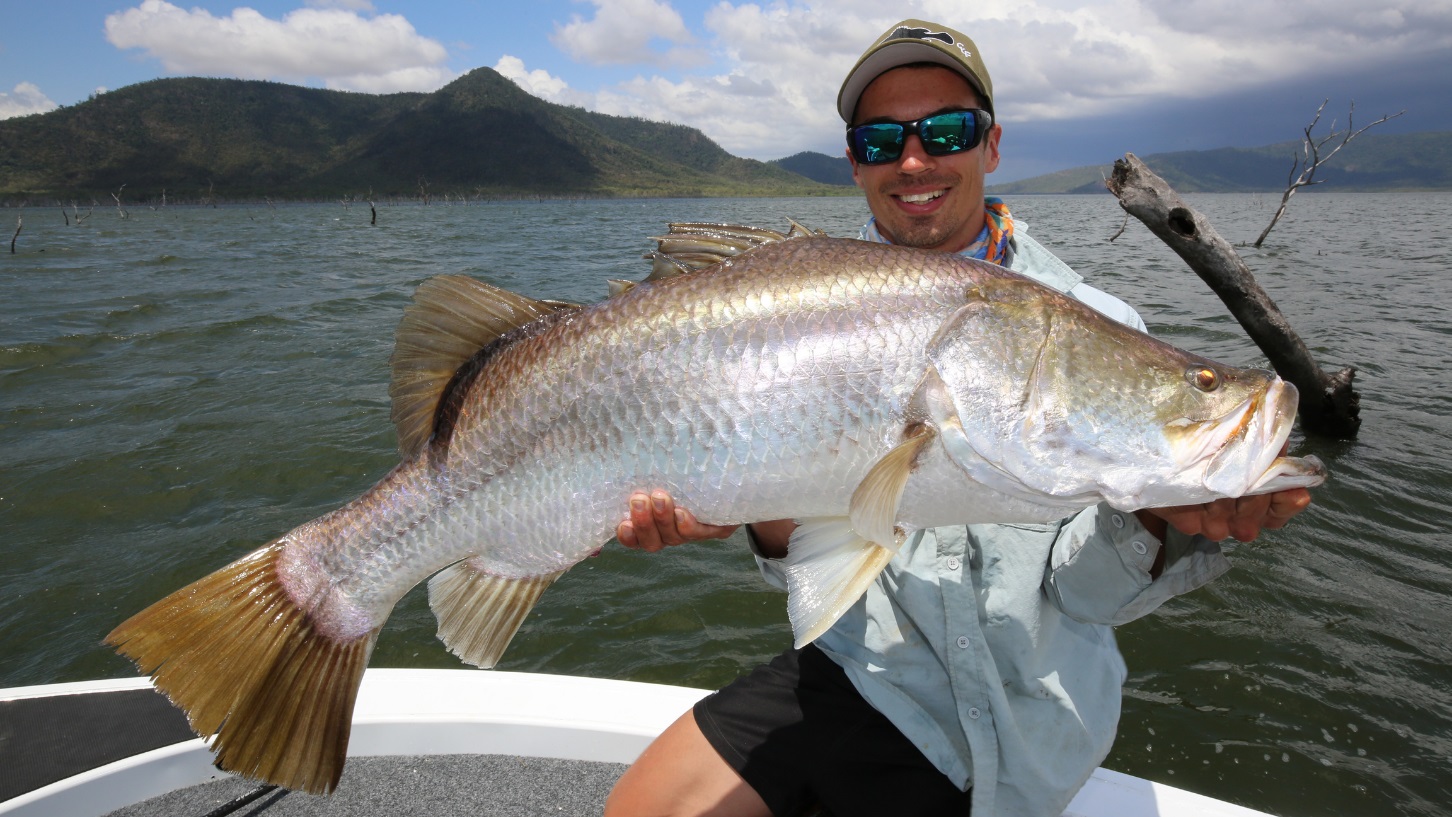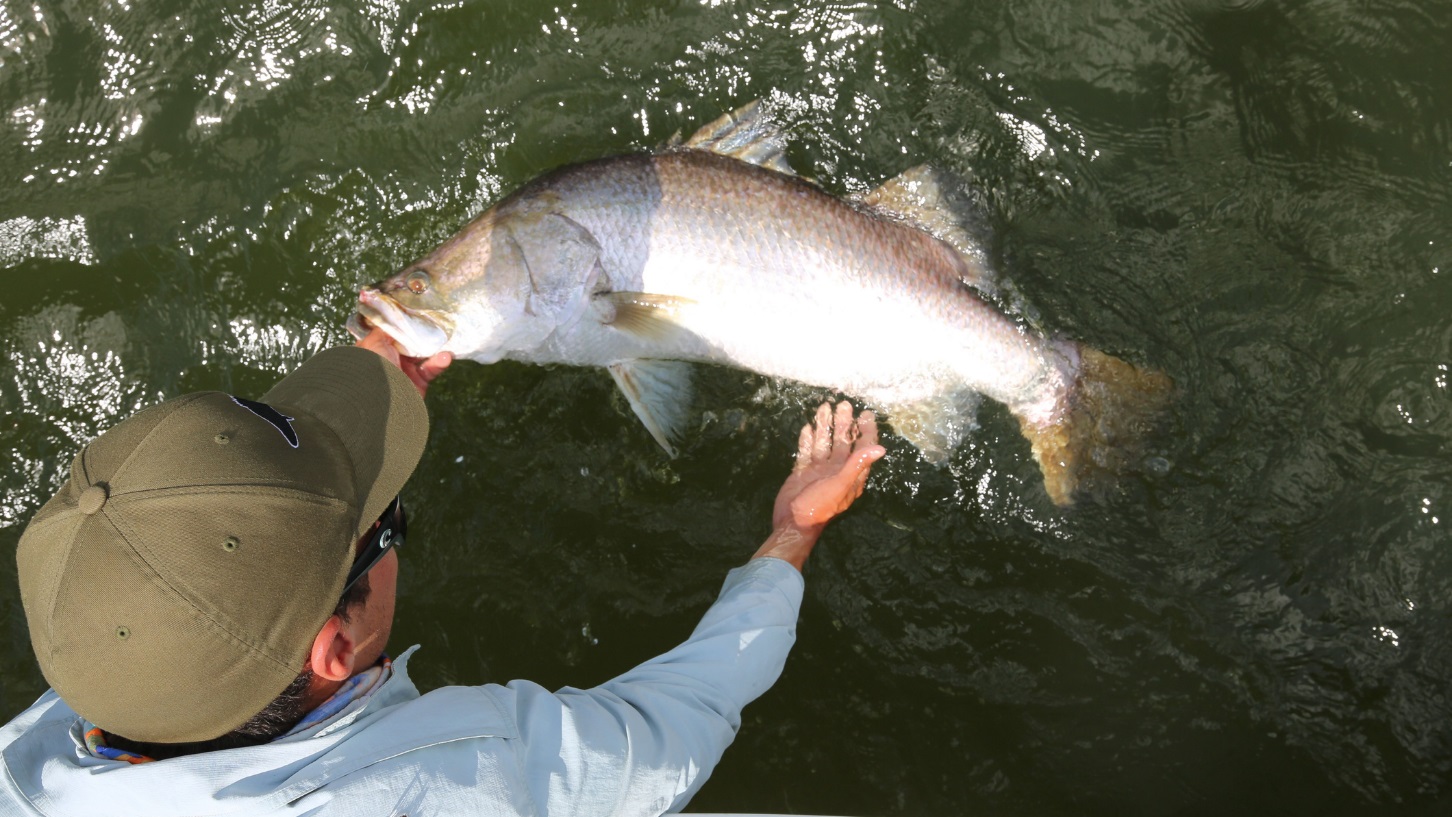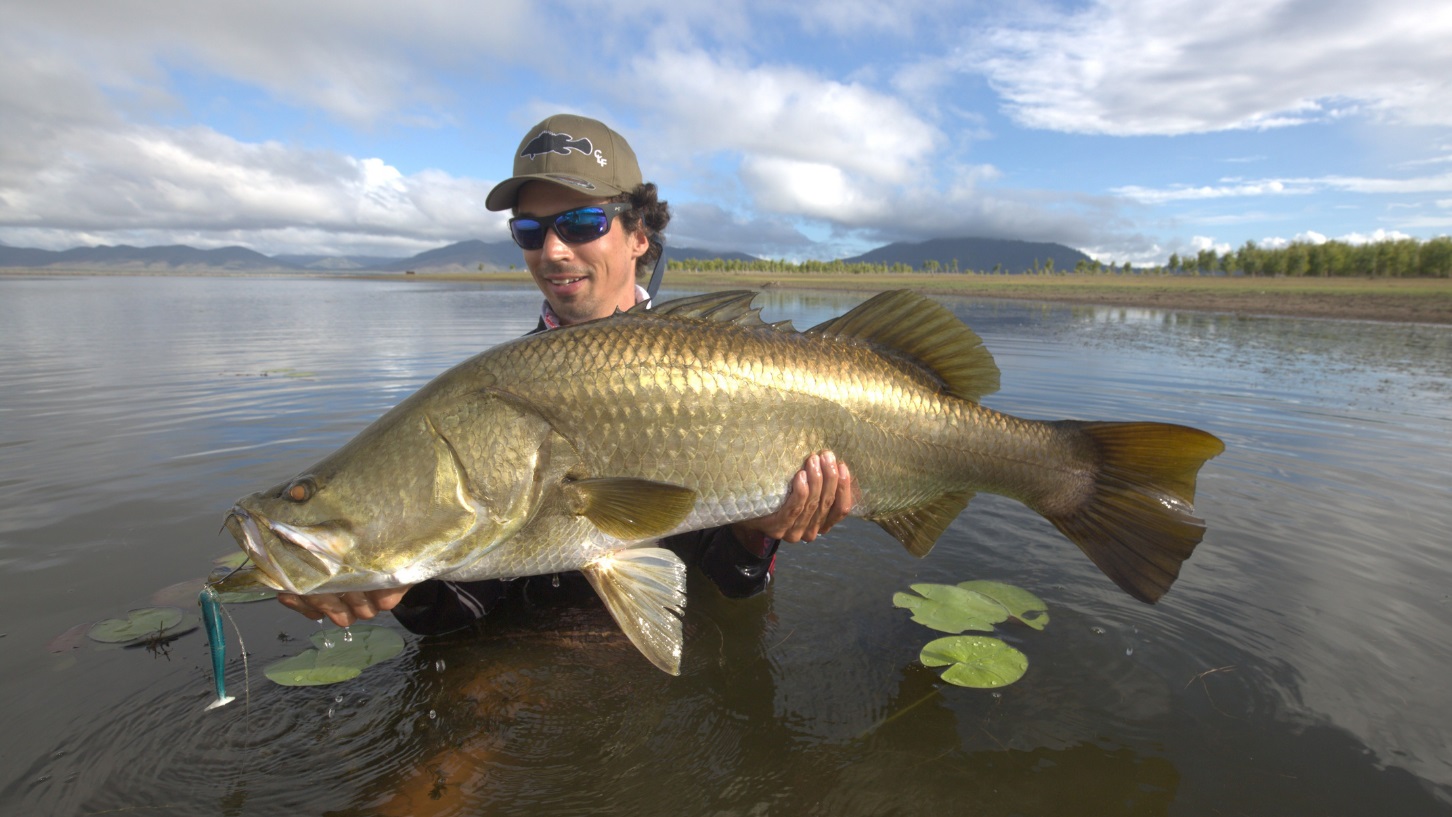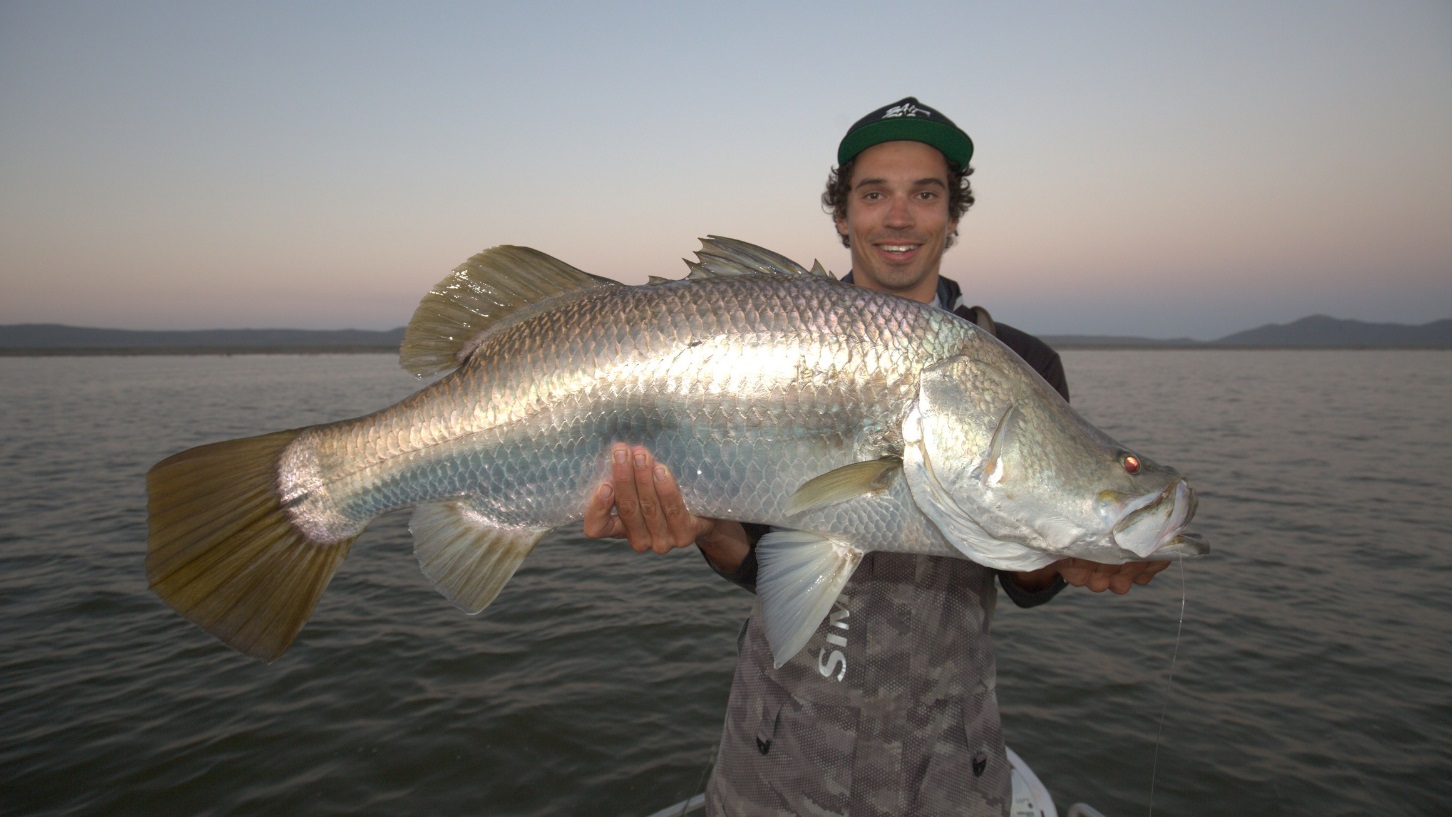| Your browser is not supported. | ||
|
Please browse our site using any of the following options:
| ||
How to choose the best soft plastic to catch BIG Barramundi

The awesome Barramundi is an Aussie icon when it comes to fishing the northern waters of Australia -and for good reason! Barra are one of the hardest fighting fish in our waters, they grow to huge sizes and taste phenomenal.
Barramundi are an apex predator in the water and mostly hunt down live fish and prawns to eat. Due to this, Barra are an amazing target for anglers using lures and will smash a range of lures from the surface as well as down deep. When going on the hunt on your next Barramundi fishing trip, here's some helpful information to help you choose the best soft plastics to catch BIG Barrai!
Which style of Soft Plastic is Best for Catching Barra?

Soft plastics seem to really work wonders on Barra and are my go-to lure for big Barra. Both saltwater estuary Barra and freshwater impoundment Barra are suckers for a well-presented soft plastic. And fortunately, soft plastics come in a wide range of shapes, sizes and colours to suit all barramundi fishing scenarios.
While there are a range of soft plastics that will tempt hungry Barramundi, for me personally there are two standout patterns. These are the paddle tail style and the shrimp or prawn style. The paddle tail soft plastics do a great job of replicating other fish with a swinging tail and lots of action, while the shrimp do a great job of looking just like a real Crustacean with a flicking tail and swinging legs. These two styles of soft plastics come in a range of different colours, sizes and brands. One of my favourites from each style are the Keitech Swing Impact Fat in paddle tails and the Berkley Gulp Shrimp in Prawn style.
Paddle Tails
Paddle tail soft plastics work best when the Barra are out hunting bait fish like Boney Bream and Mullet. You can do long searching casts across the area the Barra are feeding and use a medium-paced wind to swim the lure right through the strike zone. This will look exactly like bait fish trying to flee the area and should get smashed by any feeding Barra.
Shrimp/Prawn Style
The shrimp style soft plastics are a better option for Barramundi fishing when they're hanging down in a more specific area like a hole or snag. Cast the prawn right into this area and let it swim down on a tight line with a few little hops and twitches on the way down. This will look just like a prawn and will give you a chance to let the lure hang right in front of the fish before you slowly hop it back to the boat. The Barra will often eat the prawn on the drop back down, so pay attention and hook them as soon as they take the lure.
What size Jig Head?

The beauty of soft plastics is that you can rig them in a wide range of ways to suit whatever fishing scenario you want. Jig heads, weedless jig heads and treble hook set ups are all possible. If Barramundi fishing in deeper open water, I will generally run a jig head with a single treble attached to give me the best chance of hooking fish. But if I'm fishing in shallow weedy areas, I will use an unweighted weedless jig head so I can fish my soft plastic through the weed without getting snagged. If fishing in snaggy deeper areas I will run a weedless jig head with a small ball sinker tied into my loop knot to get the soft plastic down into the honey hole but help prevent it from snagging.
So, as you can see, you can rig your soft plastics for just about any Barramundi fishing scenario. The general rule of thumb I use is if I'm fishing in heavy weed or structure, I go for a weedless jig head, but if fishing in open water I go for a regular jig head setup with a treble or two attached. Then I adjust the weight of the jig head/sinker to suit what depth of water I want to get the soft plastic down to.
This is as easy as swapping from a 1/4 jig head to a 3/8 or more if you want to fish deeper. If using a weedless jig head, simply add a heavier ball sinker into your loop knot. Hook size can also be changed depending on the size of your soft plastic. You want your hook point to protrude about halfway down the length of your soft plastic, as this allows for the best hookup rate without going too far down the soft plastic and potentially stiffening up the lure up and limiting action.
Always remember to rig your soft plastic nice and straight on your jig head so the soft plastic swims right on the drop without spinning. One of the best features of soft plastics is that they will work on the drop and on the retrieve if rigged right. So, pay attention for strikes as your plastic sinks down the water column, as well as while paused or suspended. Sometimes it's a good idea to add a few pauses and twitches in order to excite any nearby Barra.
What size Soft Plastic?
The size of your soft plastic depends on the size of the bait the Barra are feeding on and the size of the Barra themselves. If you're targeting smaller Barra, you may want to drop down to a 3 or 4inch soft plastic rigged on a 3/0 or 4/0 hook. If targeting big Barra, you should probably be looking at a 6 or 7 inch soft plastic. But this isn't always the case, if the big Barra are feeding on small fish or shrimp, you want to match the hatch with a smaller lure size.
Barramundi have a great ability to go crazy during the fight, jumping and pulling drag with ease. This puts a great deal of pressure on your hook so go for a heavy gauge strong jig head. The TT headlockZ HD jig heads with the heavy gauge hooks are a great option. Picking a size and colour of soft plastic that matches the baitfish you have in the area you are fishing will also increase your chances of a hook-up. If the water is clear, I will go for natural colours such as browns and silvers. If fishing in dirty water, I'll switch to something bright like a gold or orange that provides additional visibility.
Soft plastics fish well on both spin combos and baitcaster setups so it is up to personal preference what you use. I use a 3 - 6kg rated rod with 30lb braid and 60 or 80lb fluorocarbon leader. I highly recommend attaching the braid to the leader with an FG knot as it will allow for easy casting and retrieving. Braid also gives you a great feel when working the soft plastic and improves the casting distance and accuracy of lures. The heavier leader stops the Barra biting you off when they engulf the whole soft plastic. When you feel a Barra take the soft plastic, set the hook with a nice firm lift of the rod and then let the fun begin!
Now go bag a big Barra!

Once you get the hang of casting soft plastics when Barramundi fishing, you will quickly become hooked. It's an exciting and fun form of fishing. Barra are one of the most highly prized fish in Northern Australia and soft plastics are a great way to get them in the boat!
Find your local Anaconda store or browse online to check out our extensive range of fishing gear for your next Barramundi session.
For more tips and other helpful fishing guides, head over to our adventure centre for everything you need.